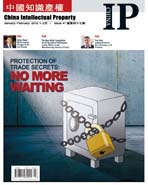Article 10 of Anti-Unfair Competition Law of the People’s Republic of China provides that trade secrets encompass two aspects, i.e., technical information and commercial information. According to the Regulations of the Beijing Municipality against Unfair Competition promulgated by the Standing Committee of the Beijing Municipal People’s Congress, trade secrets include technical secrets, technical information and commercial information.
I. The scope of technical information of trade secrets
The technical information under the Anti-Unfair Competition Law of the People's Republic of China can be read to include:
(1) Technical merit;
(2) Technical potential;
(3) New technology expectations;
(4) Substitutive technology expectations;
(5) Patent trend; and
(6) Influence of new technology expectations.
According to Several Provisions on Prohibiting Infringements upon Trade Secrets issued by the State Administration for Industry & Commerce (SAIC), technical information includes “design, procedure, product formula, production process, production method, etc.” According to Several Opinions on Strengthening Technical Secret Administration during Turnover of Technical Personnel issued by the State Scientific and Technological Commission, “technical secrets of an entity means the technical information which is developed by the entity or is obtained by the entity through other legitimate means, is not open to the public, is able to bring economic interest or competitive edge to the entity and has practical applicability, and for which the entity has taken some security measures, including but not limited to design drawing (including sketches), test result and record, process formula, sample, data, computer program, etc.. Technical information can be specific and complete information, which consists of the technical solution of a product, process materials and their improvements. It also can be part of the technical factors of a product or some process materials.”
According to SAIC interpretations and the State Scientific and Technological Commission, technical information includes technical secrets, while technical secrets contain food technology information.
According to the Interpretations of the Supreme People’s Court and the State Scientific and Technological Commission, technical information should also include non-patented technical achievement. According to Article 51 in Opinions upon Correct Solution to Problems Concerning Technical Dispute Cases issued by The Supreme People’s Court and the State Scientific and Technological Commission, “non-patented technical achievements should meet the following requirements:
(1) Technical solution or know-how which includes technical knowledge, experience or information;
(2) Under secret state, that is, the information can’t be directly obtained through public channels;
(3) Has practical applicability, that is, the information is able to bring economic interest or competitive edge to the obligee;
(4) The owner has taken proper security measures and has never provided the information to others without declaring the duty of confidentiality.”
II. The scope of commercial information of trade secrets
According to the interpretations of Anti-Unfair Competition Law of the People's Republic of China, business information includes:
(1) The share of new markets and how to exploit new markets;
(2) The social purchase power of a product;
(3) The local distribution of a product;
(4) The long-term, mid-term and short-term trend of development of a product;
(5) Operation strategy;
(6) Circulation channel and institution.
According to Several Provisions on Prohibiting Infringements upon Business Secrets issued by the State Administration for Industry & Commerce, business information includes: “management know-how, customer list, goods supply information, production and marketing strategy, the base number and the bidding document in a tender, etc..”




